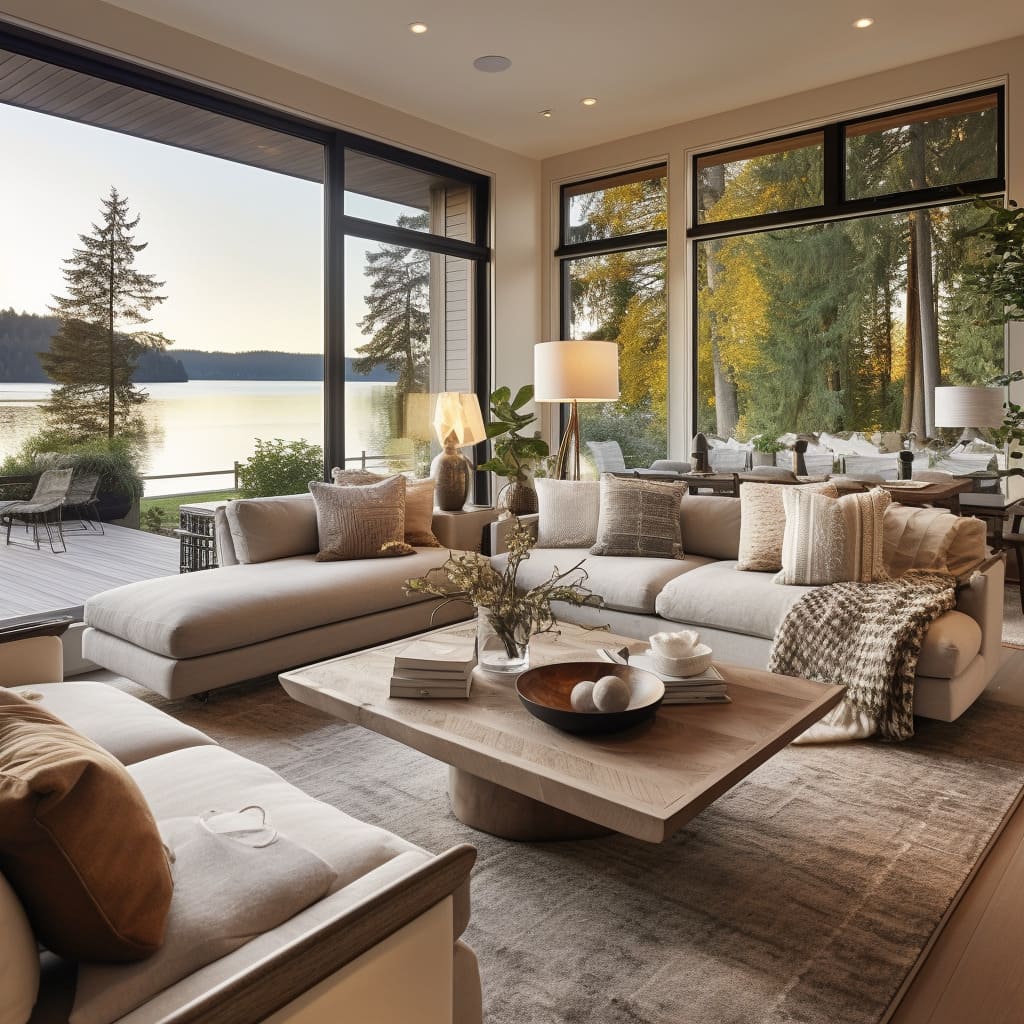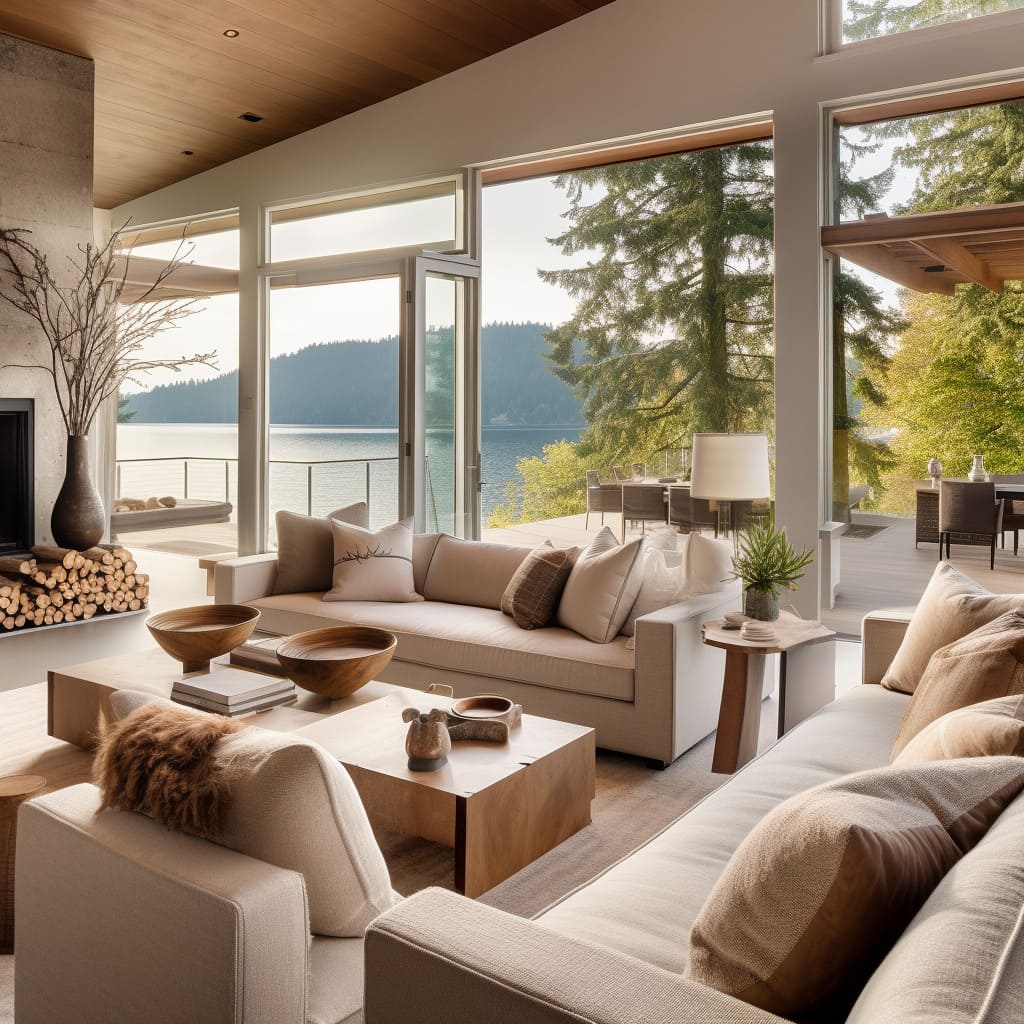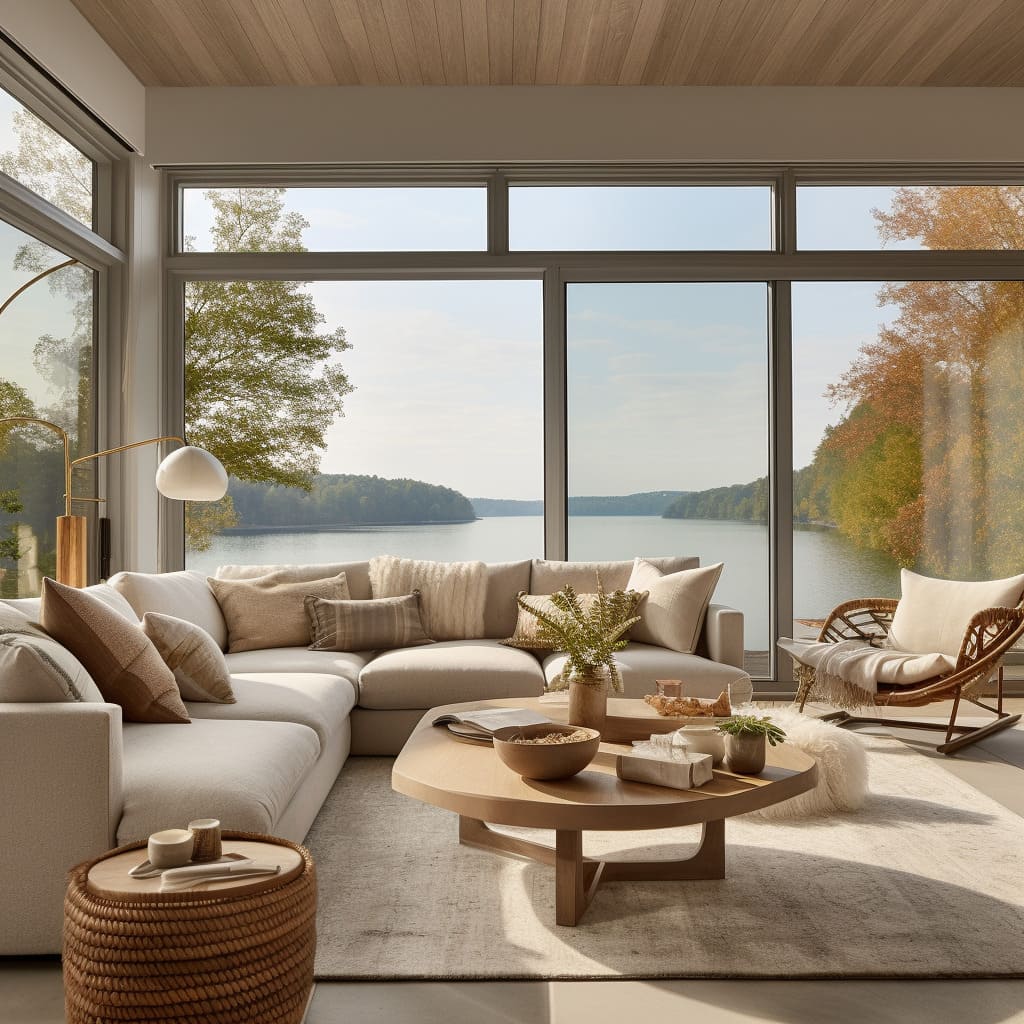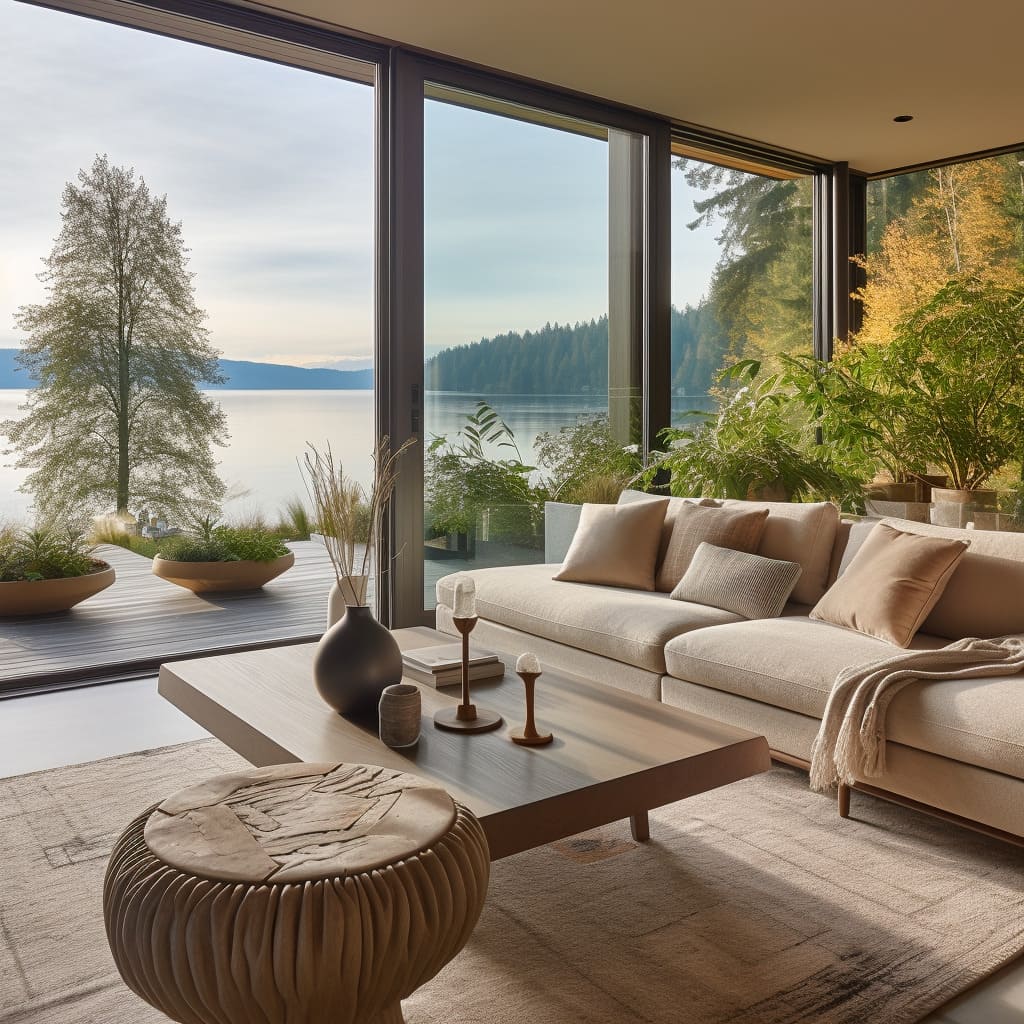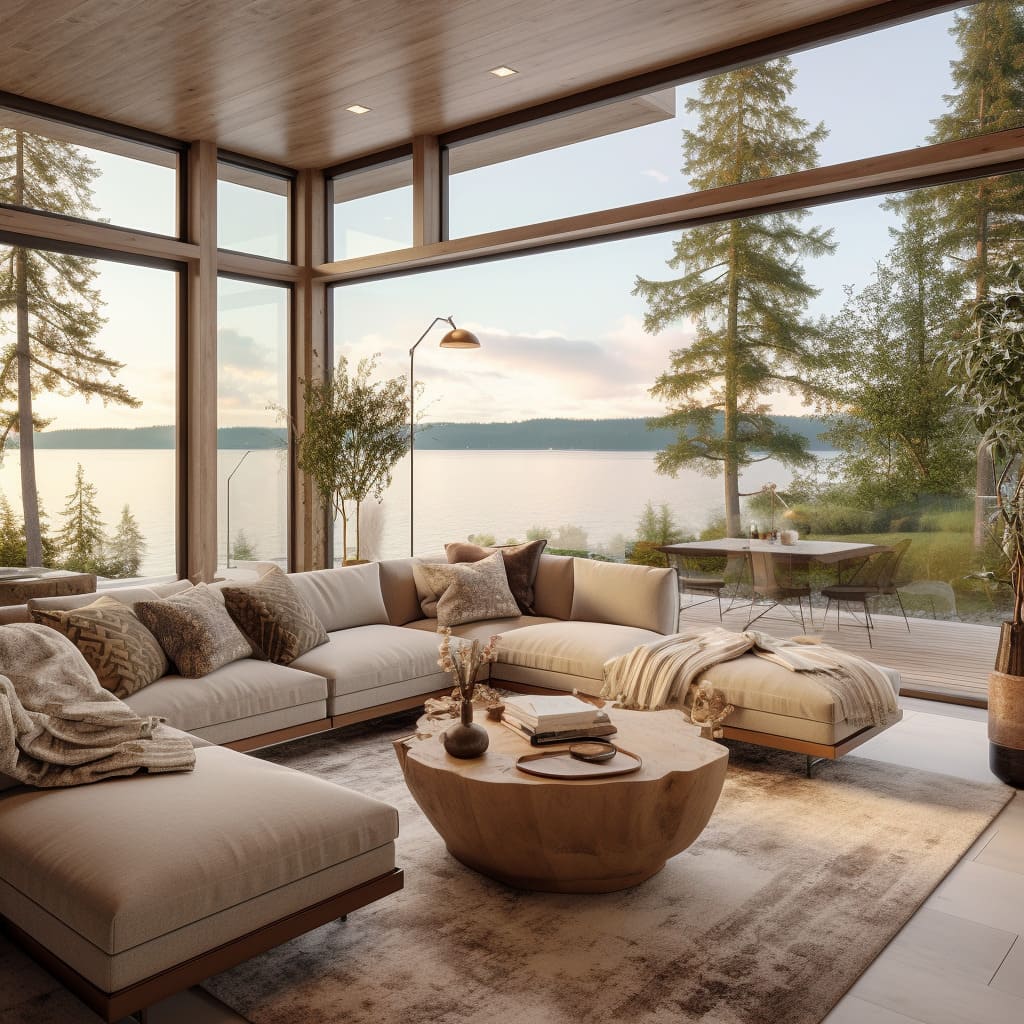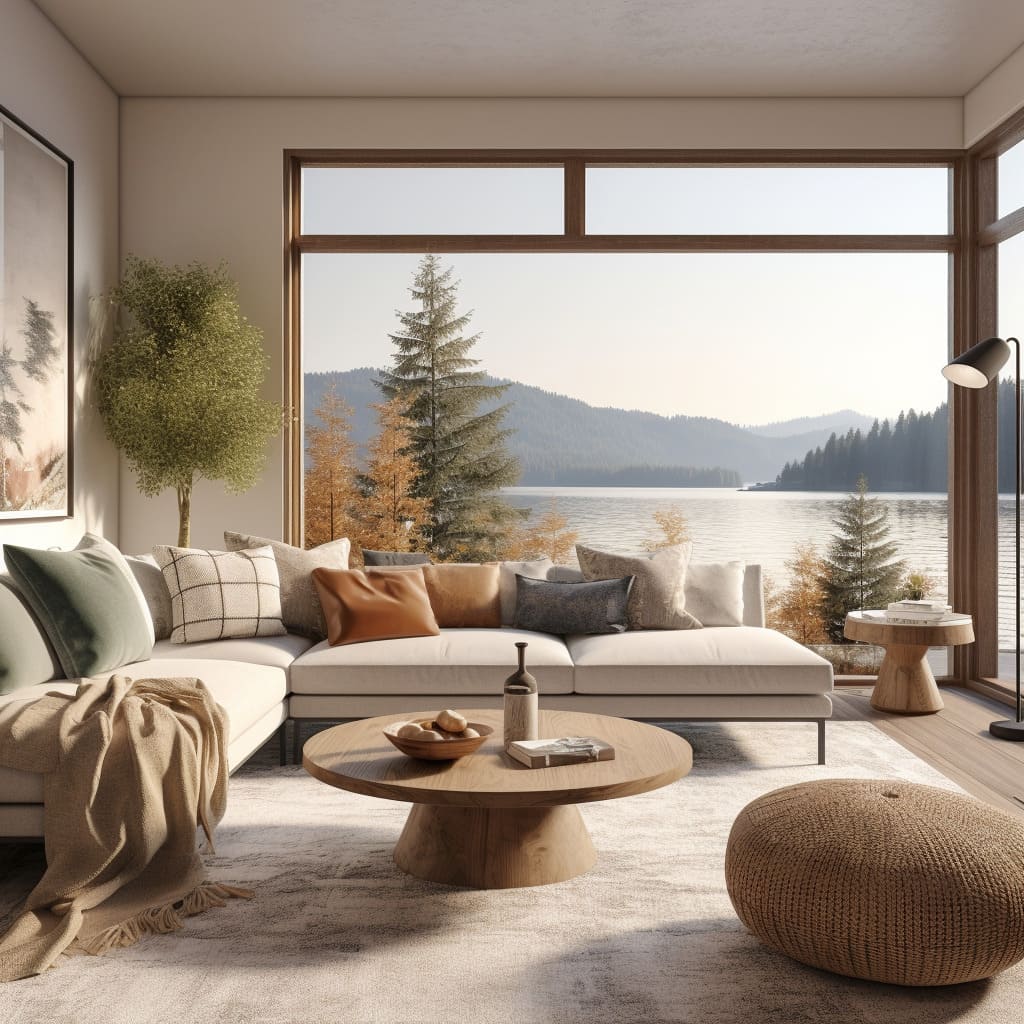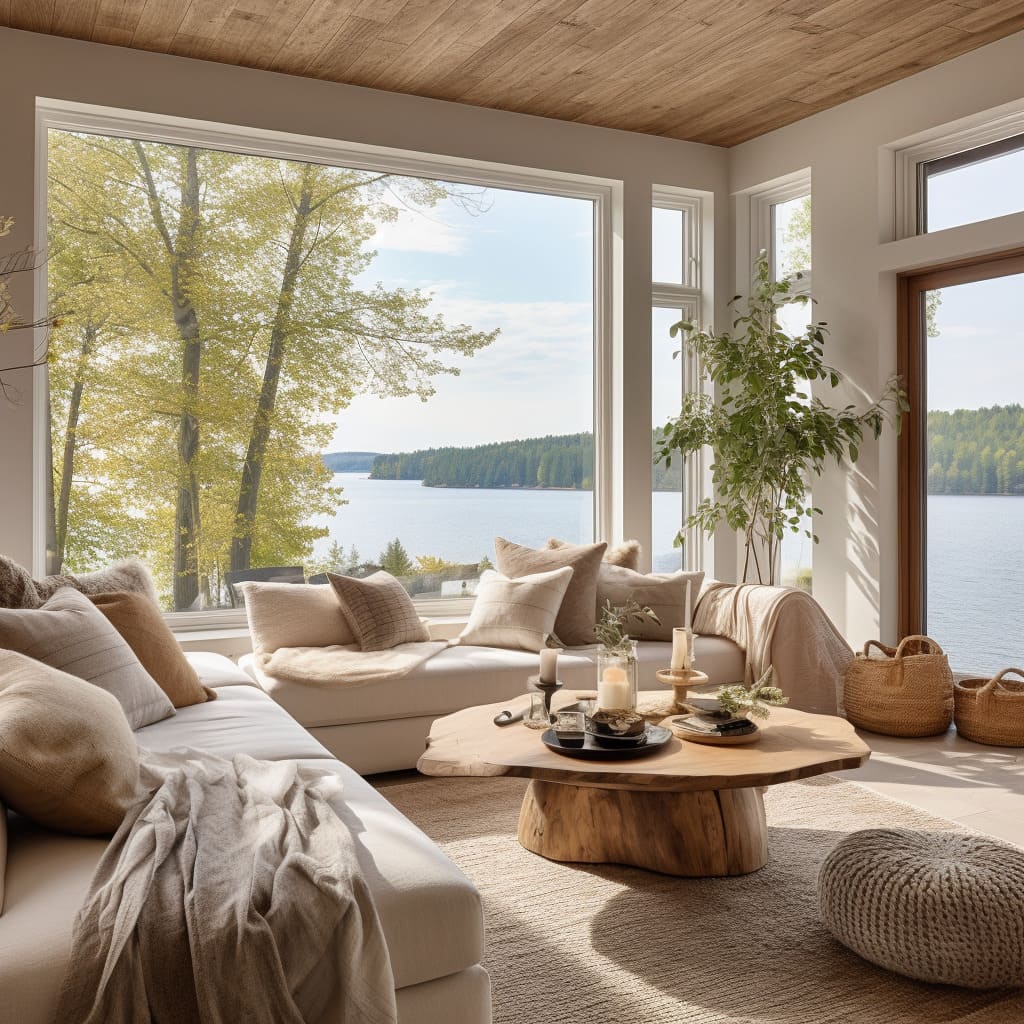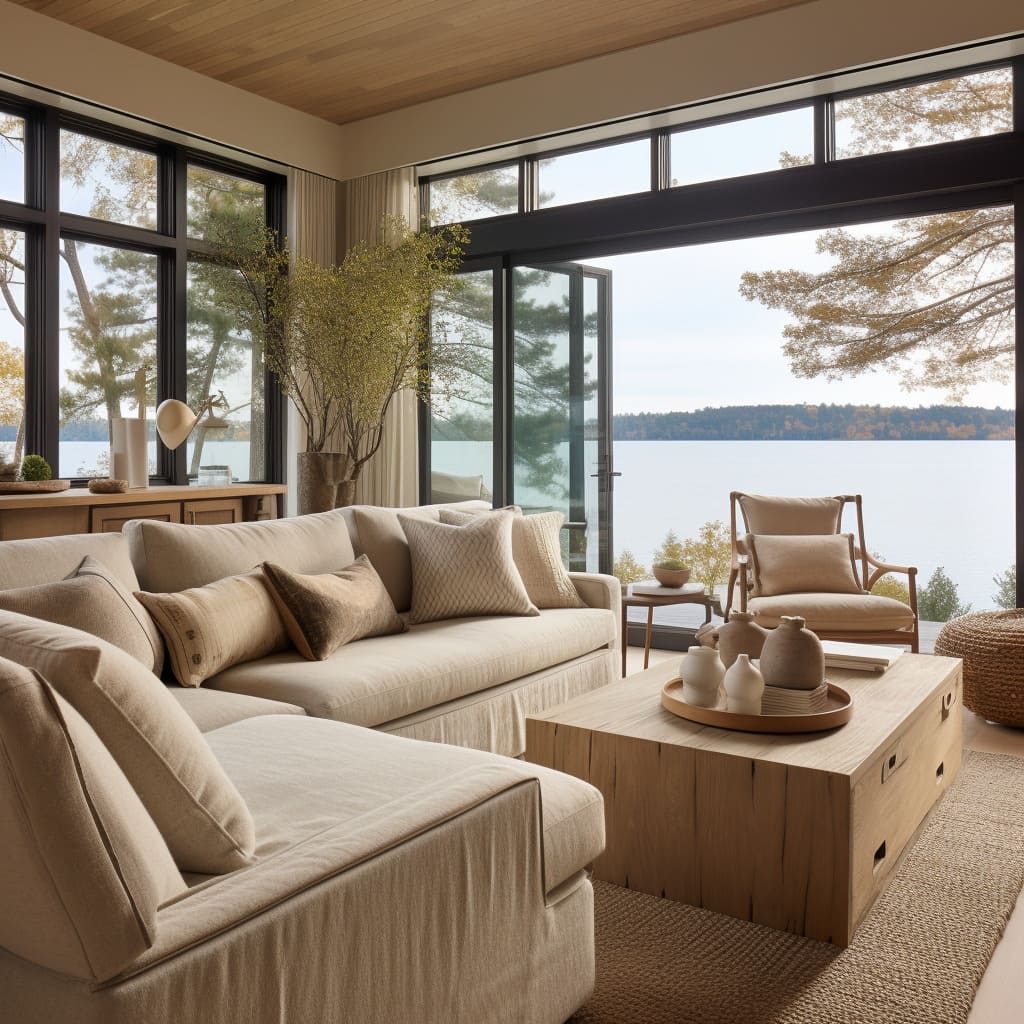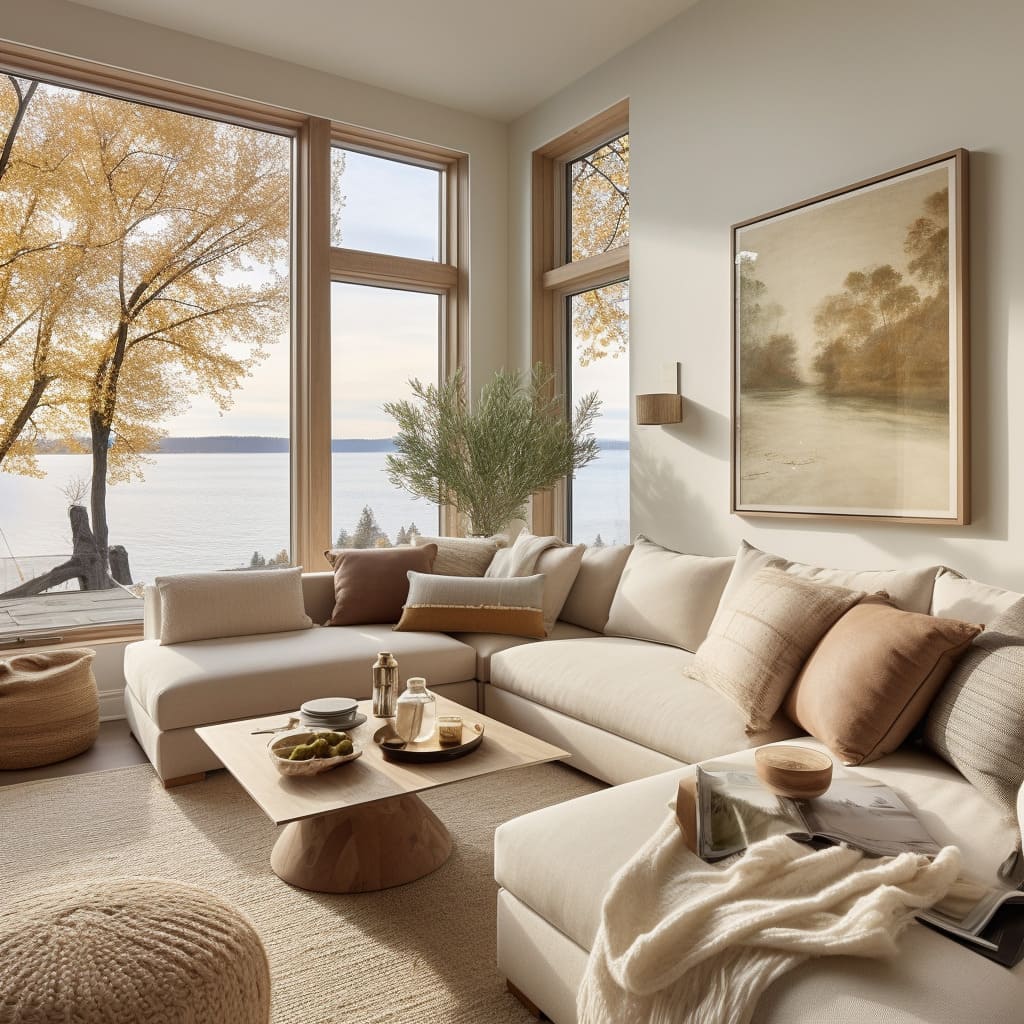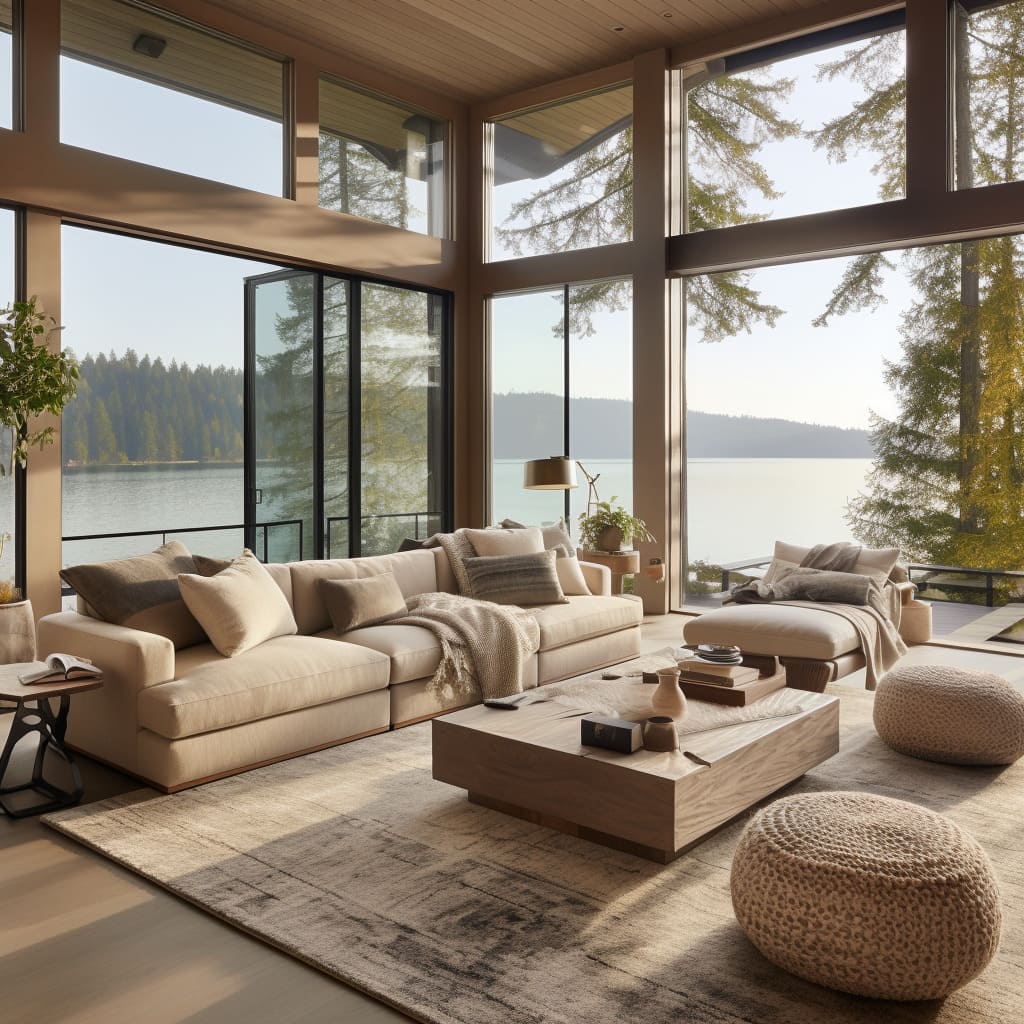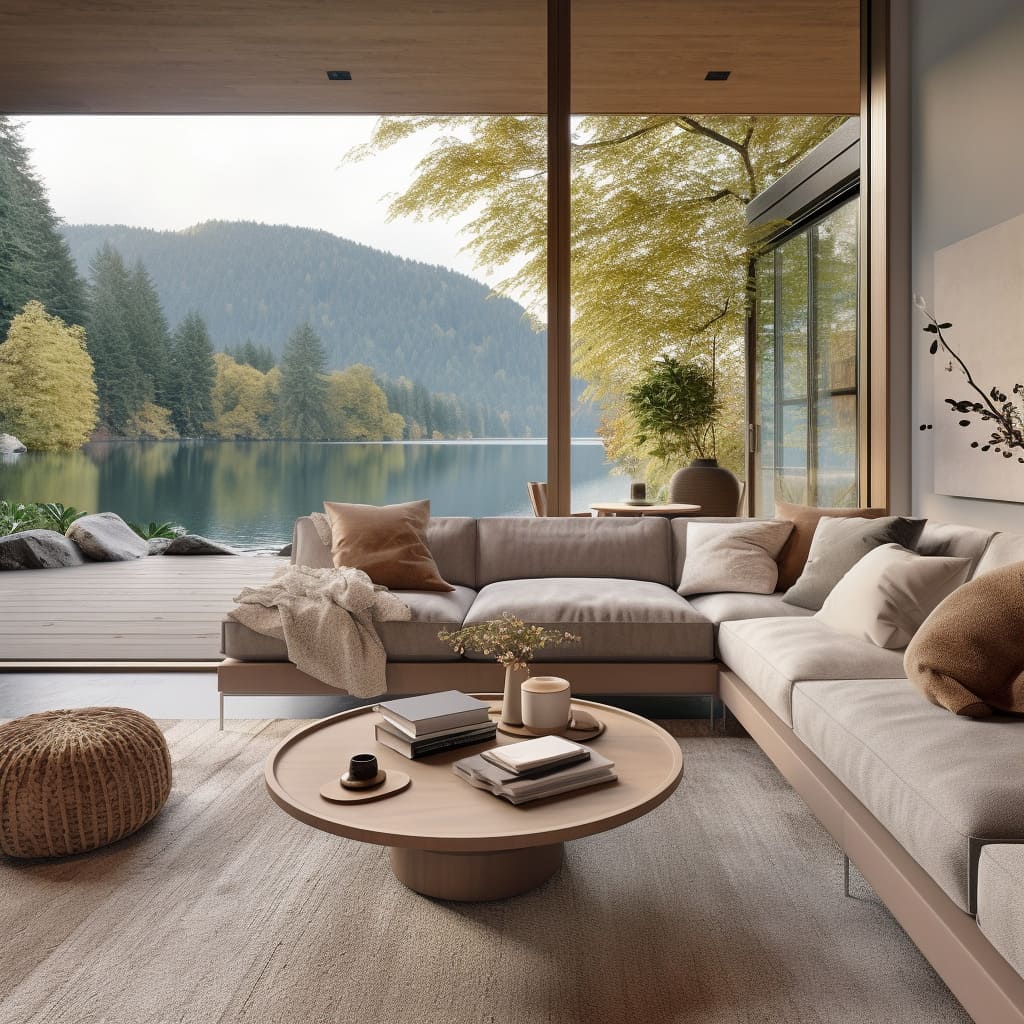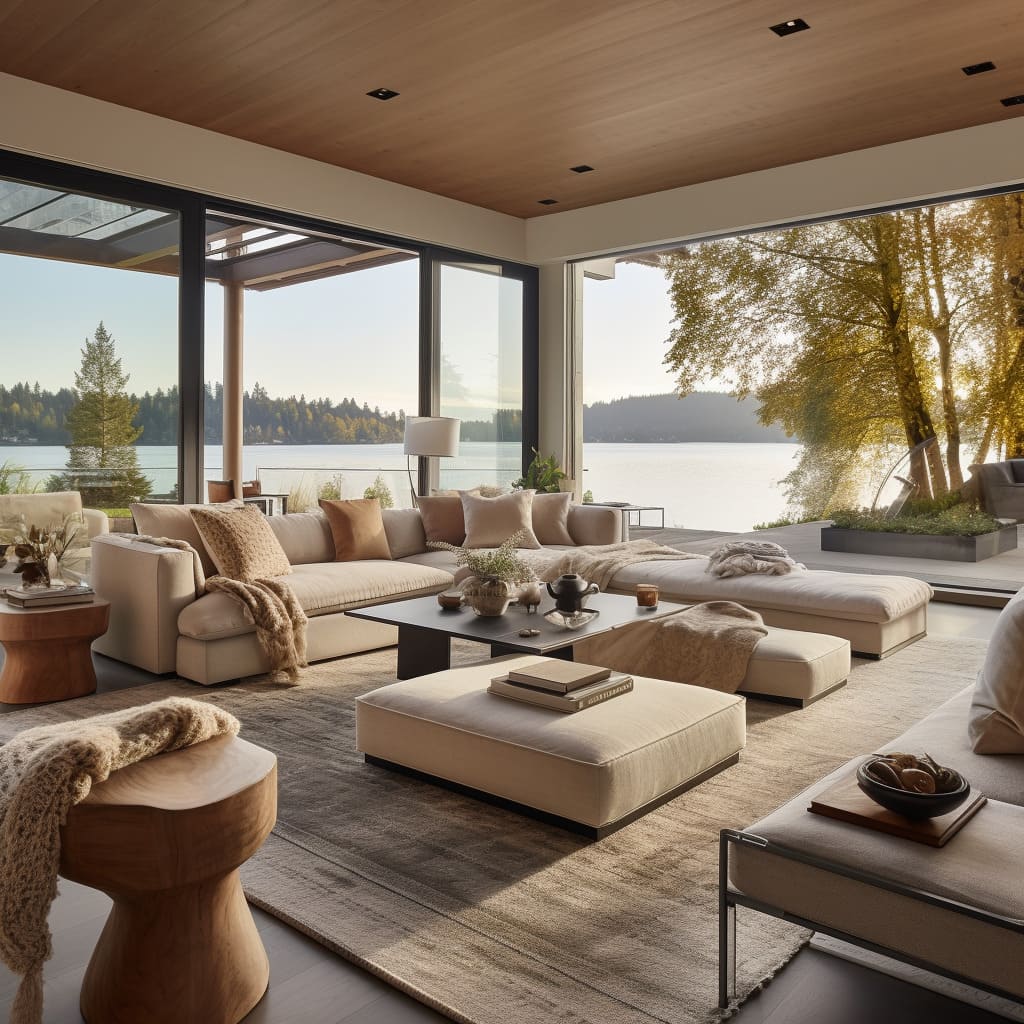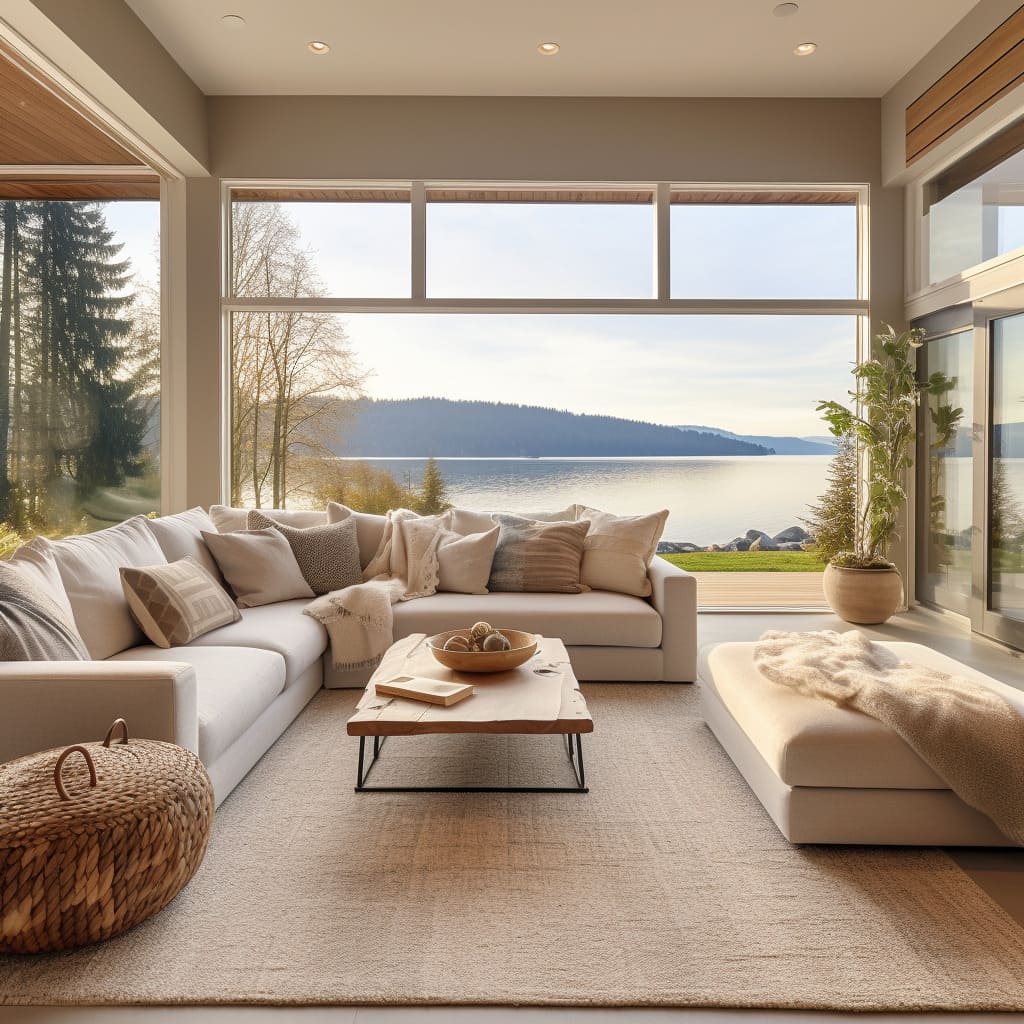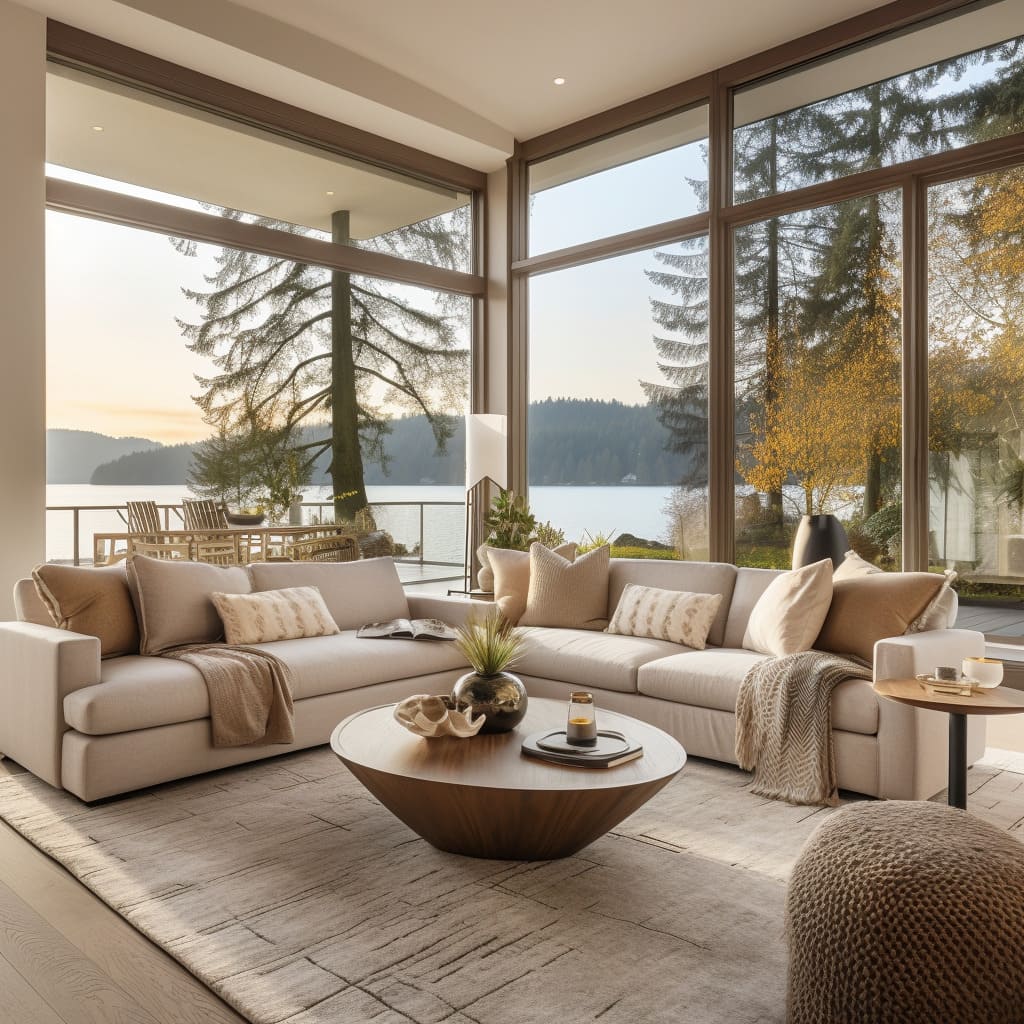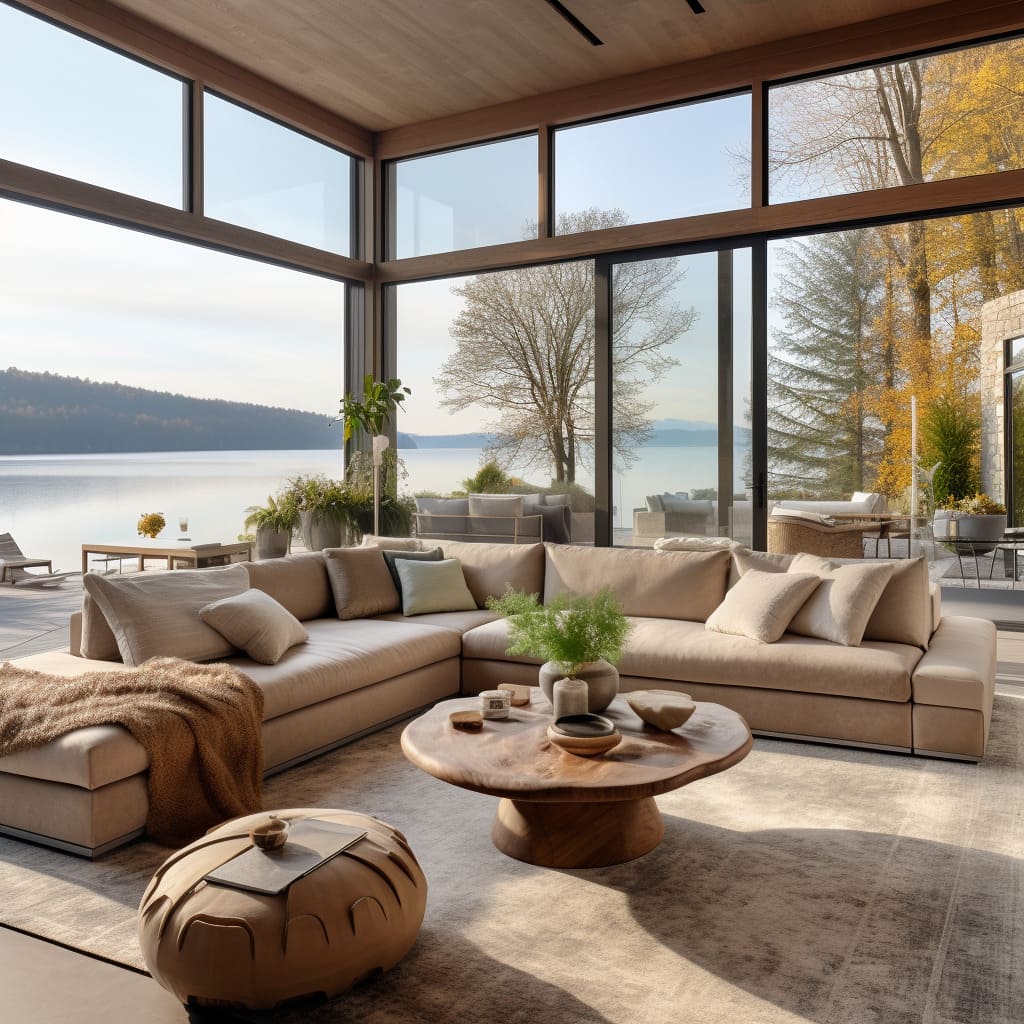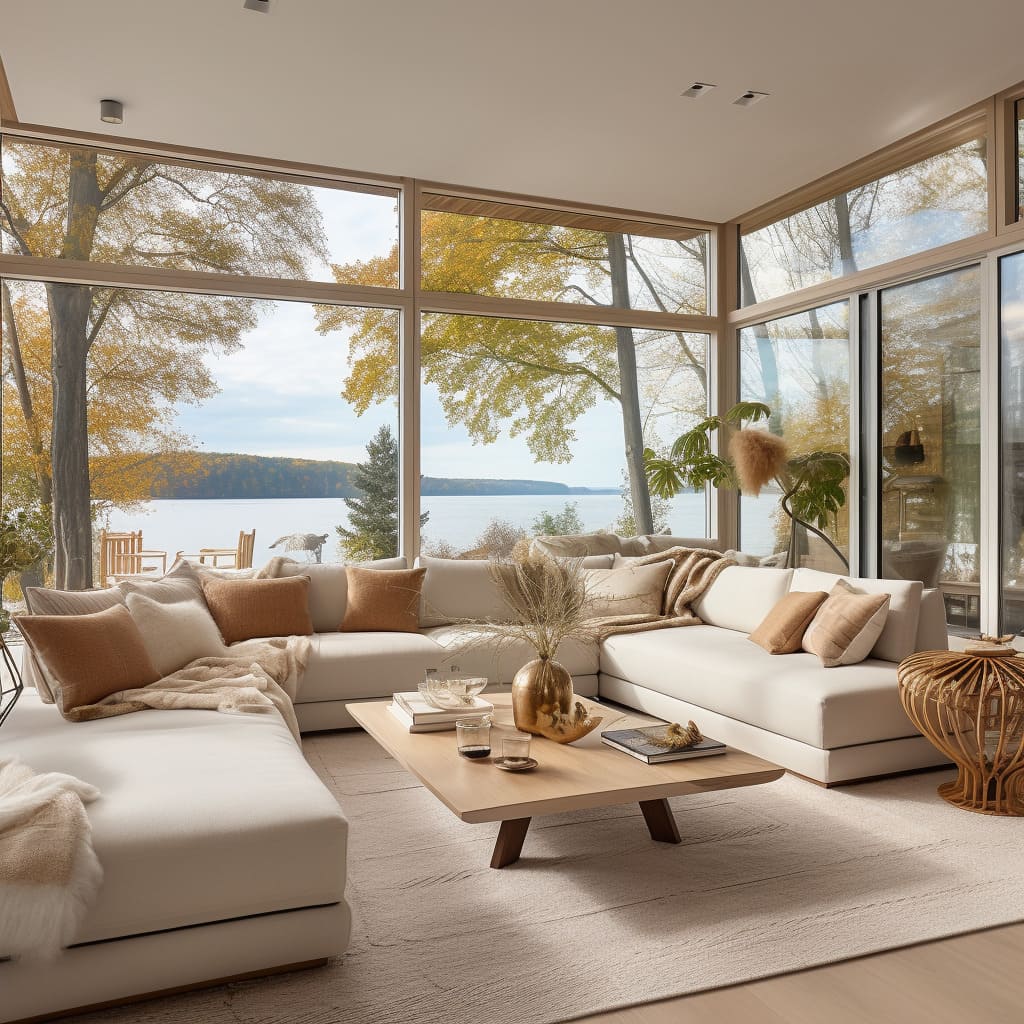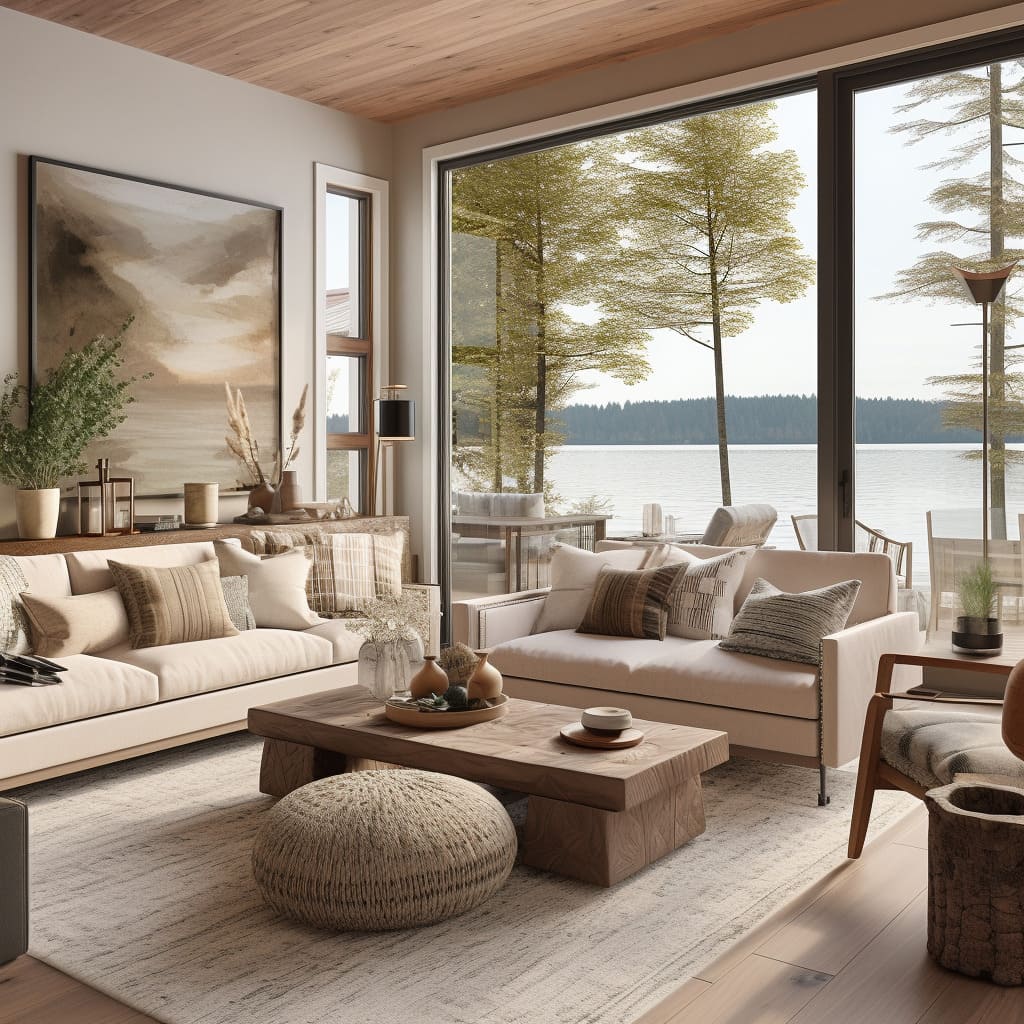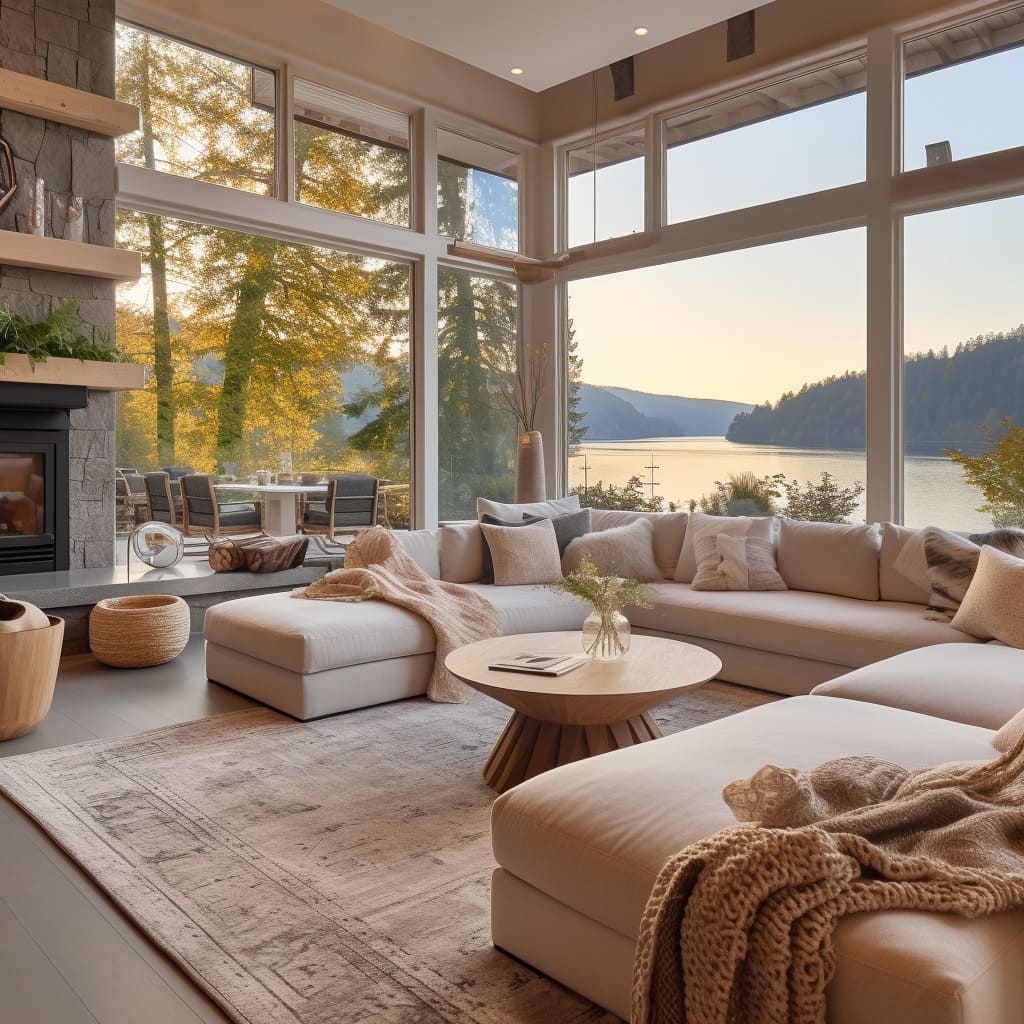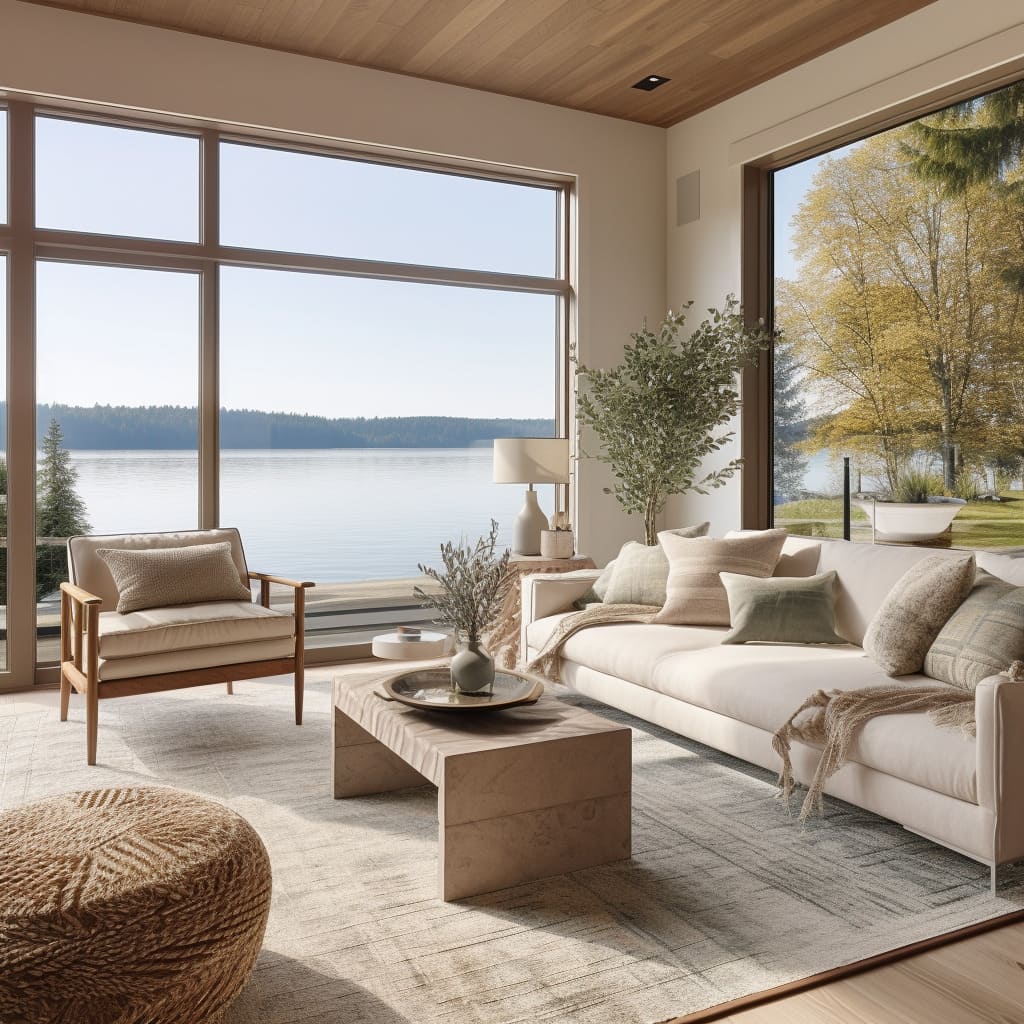This article will guide you through the essential elements that make up contemporary lakeside living, focusing on clean lines, geometric shapes, and a carefully chosen selection of decor. We will examine how these features create a harmonious balance between the elegance of modern design and the practical needs of a home by the lake.
Emphasis will be placed on the integration of contrasting textures and the strategic use of indoor greenery to mirror the natural lakeside surroundings.
Discover how to craft living spaces that are not only visually captivating but also provide a comfortable and inviting atmosphere, perfect for the unique setting of a lakeside home.
Nature-Inspired Comfort
Such interior design combines the comfort of contemporary living with natural elements, creating spaces that are both stylish and welcoming. This approach involves maximizing natural light, usually through large windows that connect the indoors with the scenic outdoors.
Neutral color palettes are predominant, with shades like beige, brown, and cream complementing the natural tones of wood used in ceilings and flooring. Furniture tends to be contemporary, featuring clean lines and comfort, often seen in sizable sectional sofas adorned with various textured throw pillows to enhance the cozy vibe.
The decor in such spaces leans towards minimalism, focusing more on materials and textures rather than bold colors or patterns. This balance brings together elegance and comfort, with wooden furniture pieces like coffee and side tables adding warmth.
A fireplace with a simple yet stylish mantel often serves as a centerpiece, amplifying the room’s cozy atmosphere.
Accessories are used sparingly but with intention. Items like large vases, wooden bowls, and small decorative pieces add a personal touch without overcrowding the space.
The lighting is soft and inviting, achieved through a combination of table lamps and the natural light streaming in through the windows.
Blending Indoor Comfort with Outdoor Beauty
There’s a growing trend of blending indoor spaces with the outdoors, often achieved through architectural features like expansive floor-to-ceiling windows. These large windows not only offer stunning views of the surrounding landscape but also turn it into a dynamic backdrop that changes with the seasons.
The design emphasizes openness and fluidity, allowing the interior to visually extend into the outdoor environment. The contrast of window frames against light interiors draws attention to the views while adding structure to the space.
Open-plan layouts enhance this sense of spaciousness, with furniture arranged to encourage social interaction and provide unobstructed views. Furnishings are a mix of functional and comfortable elements.
Structured pieces like solid coffee tables coexist with plush sofas and soft, oversized poufs, balancing style with comfort. A large, textured rug in the living area defines the space and adds depth to the neutral color scheme.
Incorporating natural elements is also a key aspect of this design. Indoor plants and natural textures in furnishings and decor complement the outdoor scenery, adding vibrancy to the neutral interiors.
This connection with nature is not just visual but also tactile, enhancing the overall aesthetic.
Elegant Geometry
A key aspect of contemporary interior design is the thoughtful selection of decorative items and the emphasis on clean, geometric lines. This approach creates a sophisticated and modern aesthetic throughout the space.
The coffee table often acts as a focal point, featuring a sleek, low-profile design with straight edges. This contrasts with softer textiles and curved furniture in the room, adding a distinctively modern touch.
The items displayed on the coffee table are minimalist, with simple yet elegant forms that avoid cluttering the visual space. Sculptural elements, like a textured round stool, introduce an artistic element, serving as statement pieces.
These, along with elegantly shaped vases and abstract decorative objects, lend a gallery-like feel to the room, where each piece is valued for both its visual impact and functionality. Incorporating indoor greenery in large, flat-bottomed planters near windows further accentuates the room’s clean lines.
These plants not only bridge the indoor-outdoor gap but also introduce organic shapes and textures, offering a lush contrast to the room’s neutral tones.
This design philosophy reflects a meticulous attention to detail. Each item is carefully chosen for its individual appeal and how it complements the overall harmony of the space.
The resulting interior is a blend of designed precision and effortless elegance, offering a space that is both visually engaging and functionally comfortable.
In conclusion, the essence of modern interior design lies in its ability to blend functionality with aesthetic appeal. By focusing on elements like clean lines, geometric shapes, and a carefully curated selection of decorative items, these spaces achieve a balance between contemporary elegance and practical livin
The thoughtful integration of contrasting textures and forms, along with the strategic use of indoor greenery, adds depth and character to the design. This approach not only creates visually stunning environments but also ensures that these spaces are comfortable and inviting.

